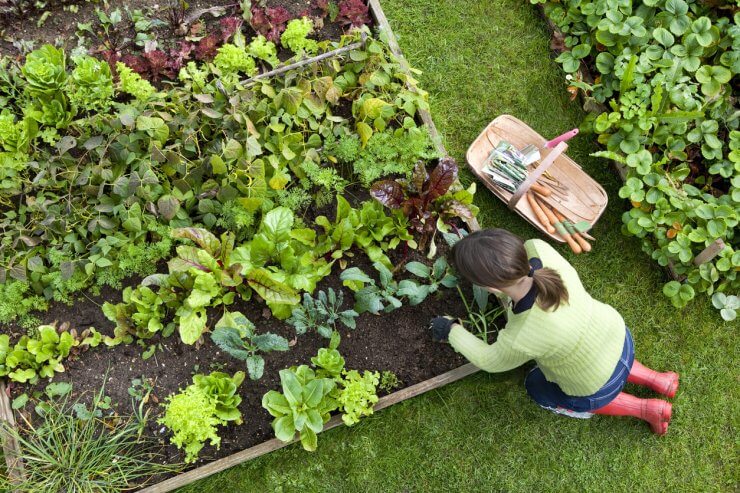
The best bit of advice I have learned about garden planning is to group your vegetables and herbs together that have similar watering and light requirements. Generally, when we envision ideas for a raised bed vegetable garden layout, we might be tempted to put vegetables where we think they’ll look best, or simply fit best, but experienced gardeners spend early spring planning their gardens for a good reason, so let’s get into all the things to consider before you build your beds and lay them out.
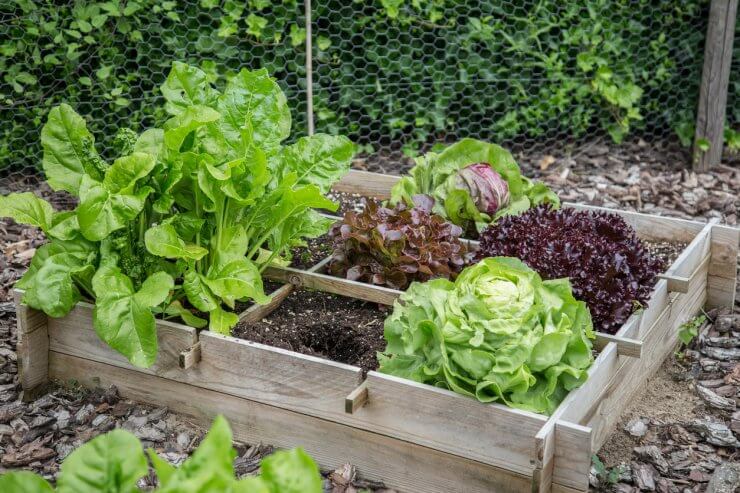
- Pick Plants that Make Good Roommates
One reason why the pros spend so much time planning is because there are such things as incompatible plants—like their moon signs are polar opposites and you definitely shouldn’t ask them to share an apartment. Have you ever had a toxic roommate? Some vegetables are considered allelopathic, meaning they may have either toxic behaviors or even chemicals that can harm plants around them, such as tomatoes, beans, beets, broccoli, cabbage, peas, and soybeans.
There are others that just don’t seem to get along, according to many gardeners. For example, dill and carrots, cabbage and strawberries, mint and asparagus, potatoes and tomatoes, or peppers and beans.
Some better pairings include tomatoes with basil, corn and green beans, carrots and onions, lettuce and chives, and carrots and leeks. These pairings have benefits of either improving the soil, optimizing a growing environment, or keeping specific bugs away. I recommend looking more into companion planting when planning your raised bed vegetable garden layout.
Discover 7 top tips for growing, harvesting, and enjoying tomatoes from your home garden—when you access the FREE guide The Best Way to Grow Tomatoes, right now!
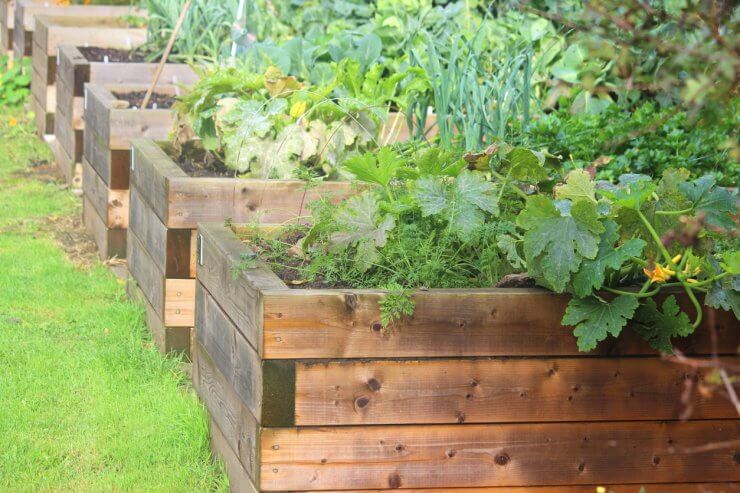
- Group Plants with Similar Light Requirements
Keeping everything above in mind, organize your sun-soaking plants together, and your shady plants together. Or, you can use your sun-loving plants to shade their more fair-skinned friends.
With enough foresight, you can also get creative by planting companion plants together. For example, if you plant carrots behind tomatoes, the tomatoes will shade the light for the carrots, who prefer shade. Corn and green beans, which have similar light requirements, also thrive together because you can allow the beans to use the corn stalks as a trellis, while the beans actually improve the soil for the corn too.
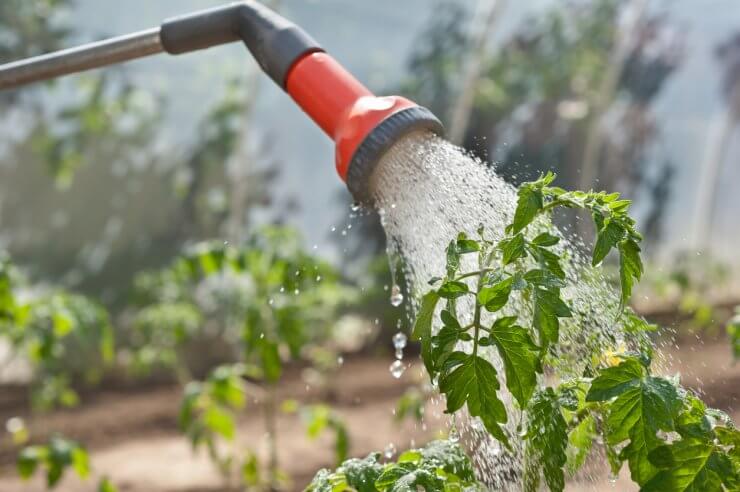
- Group Plants that Like/Dislike Water
This one is particularly important, as well as grouping veggies together that like a similar type of soil. Again, keeping the bad roommate situations above in mind, I like to organize my raised bed vegetable garden layout in a way where I can water one section at a time. I’m actually lucky enough that the home I bought had a built-in sprinkler system and I’ve been able to tinker with it to water different sections longer and shorter, but the same can be done with a hose.
Since I enjoy manually watering my garden, it’s helpful to separate the Pisces from the Aries in the garden so that everybody gets the water they want.

- Consider Your Back
If you don’t like bending over to weed your garden, you’re not alone. When thinking of your raised bed vegetable garden layout, think about how high you’ll want your raised beds to be.
I love this 32″ tall raised bed on Amazon
A good friend of mine who is quite pregnant, recently had her husband build some waist-high garden beds for her, so that she could still enjoy gardening without all the bending over, and it made me wish I had a full-sized waist-high garden myself! My body would probably argue that I could use the exercise, but it sure sounds nice, doesn’t it?
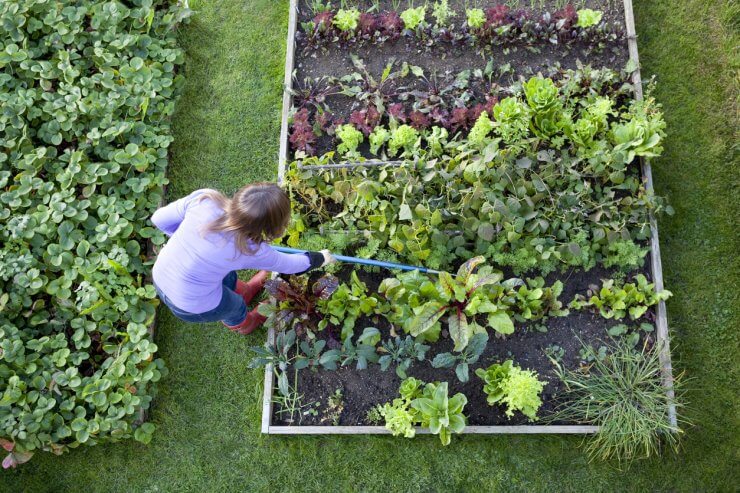
- Give Yourself Room
The benefits of building raised beds are mostly convenience. Less bending to weed, more organized plants, and spacing to move between your plants. The best raised bed vegetable garden layout generally has at least a 2 – 3 foot wide path between boxes, allowing you to crouch, harvest, and weed easily. Many gardeners prefer a stone or sand pathway that’s easy to maintain without using any chemicals to keep the weeds out.
However, if you don’t have the space or budget for that, you can easily do it with the lawn in between, just leave enough room for your lawnmower to move through. The grass clippings can actually make great mulch if it’s untreated.
If you have any other raised bed vegetable garden layout ideas, I’d love to hear them in the comments below. Getting personal anecdotes from other gardeners is my favorite part of this community!
Note: Food Gardening Network contains links to affiliate websites including Amazon and Rakuten Affiliate Network and we may receive a commission for any eligible purchases made by you through links on this page.
Discover 7 top tips for growing, harvesting, and enjoying tomatoes from your home garden—when you access the FREE guide The Best Way to Grow Tomatoes, right now!





Hi. Since I till manure into my soil, my tomatoes and green beans get huge. I mount one or two (parallel) very strong “clotheslines” over all the tall stuff 6 or 7 feet high, then as the sprouting branches start laying over I use light wire or cording and loosely go around and around and up the top half or so of each lazy branch. Then I gently pull the top end of the cord up over the clothes-line and fasten it. As the branches grow I guide them up and tighten their cords, aiming them up at an optimum (crowdedness-wise) angle. I had many tomatoes and pole beans 6-7 feet tall, loaded. Have fun with it!
Excellent Article, Amanda, as usual. Thanks for the tips you all submitted, too.
Two comments for you all: First, if you’re considering raised beds to purchase, I think Garden-in-Minutes has a lot of great products to offer. I’m planning to “give them a go!”
Secondly, I’ve had great luck growing many veggies in five-gallon pots with good media and holes punched in the bottom, four holes per bucket.
Todd Morando, KC, KS
Gymax Raised Garden Bed Wood Elevated Planter Bed w/Lockable Wheels Shelf & Liner
Bought 4 of these, on sale, from Walmart. Bought 2 more! Some assembly problems with 4 bolts on the last 2, but I love them anyway!
Loved your article. I’ve been making self watering raised beds. I put a hole 8″ up the side of a horse watering tank. . I then add plastic on the bottom & sides to hold river rock I put a pvc pipe into the hole laying on top of the rock I put landscape fabric on top of the rock. Next I add soil. I, also add a pvc pipe on the side going from the rock to the top of the tank.
Thanks for all the great tips! I also consider the ultimate height of various veggies in relation to the path of the sun (ie so the tomatoes don’t shade the eggplants, etc.)
How deep should the soul be in a waist high raised garden for like tomatoes and peppers?
Thank you for the interesting and informative article. As to ideas, we should not overlook “keyhole” gardens as a raised bed option.
Yes, you’re right! We’ll add that to the next update!
Thank you, AMANDA MACARTHUR, for putting together everything in the raised garden bed for plants. I think you have covered all the major points in this article, I will share this with my network as well.
Love this newsletter/ website
This has given me hope for a garden. Attempted last year to do a raised garden bed, beautiful plant starts, then the triple degree summer hit early and even with heavy shade cloth and fans, nothing survived.
This year my plan will be better thanks to this newsletter. So far my fall pollinator beds are doing good
Has anyone done the bucket system…3 rows of 7 buckets built with 2×4
Unable to do in ground gardening as the area is very hard, well concrete really lol
Try Dutch buckets
Great for growing peppers
Low. Maintenance once set up